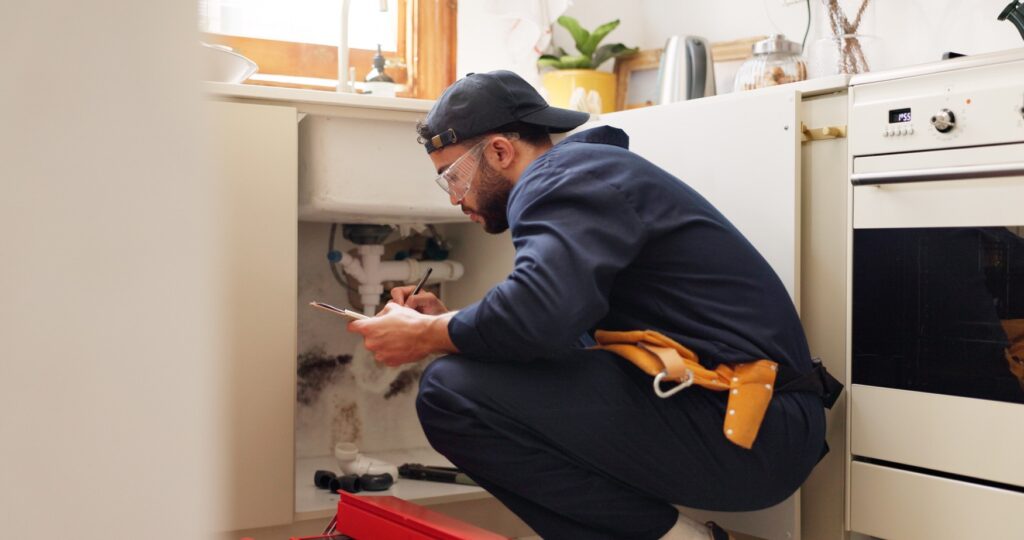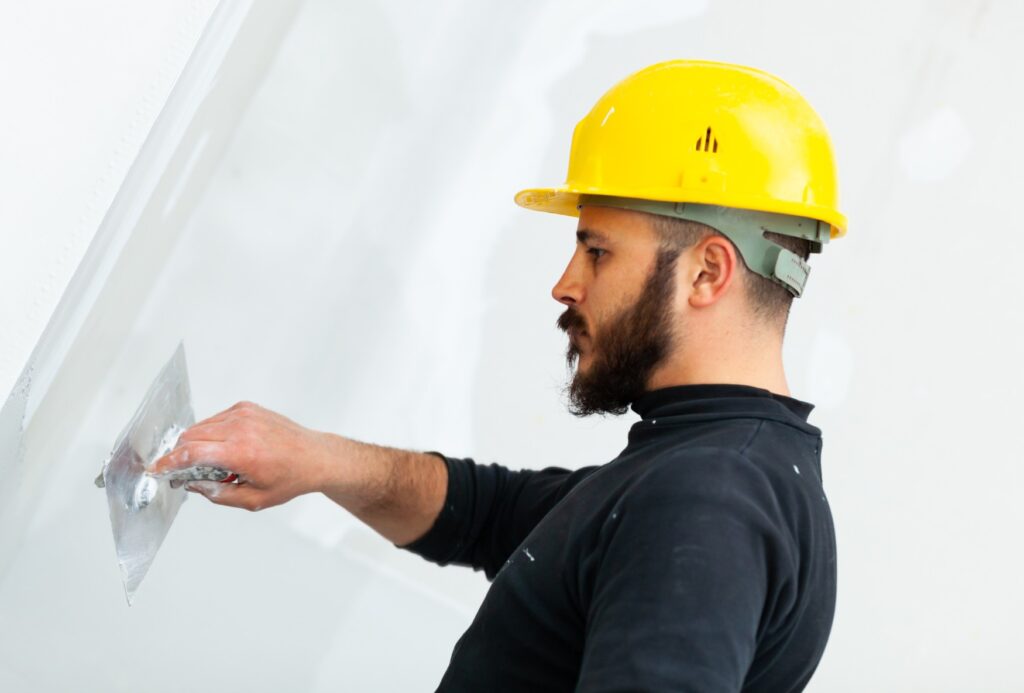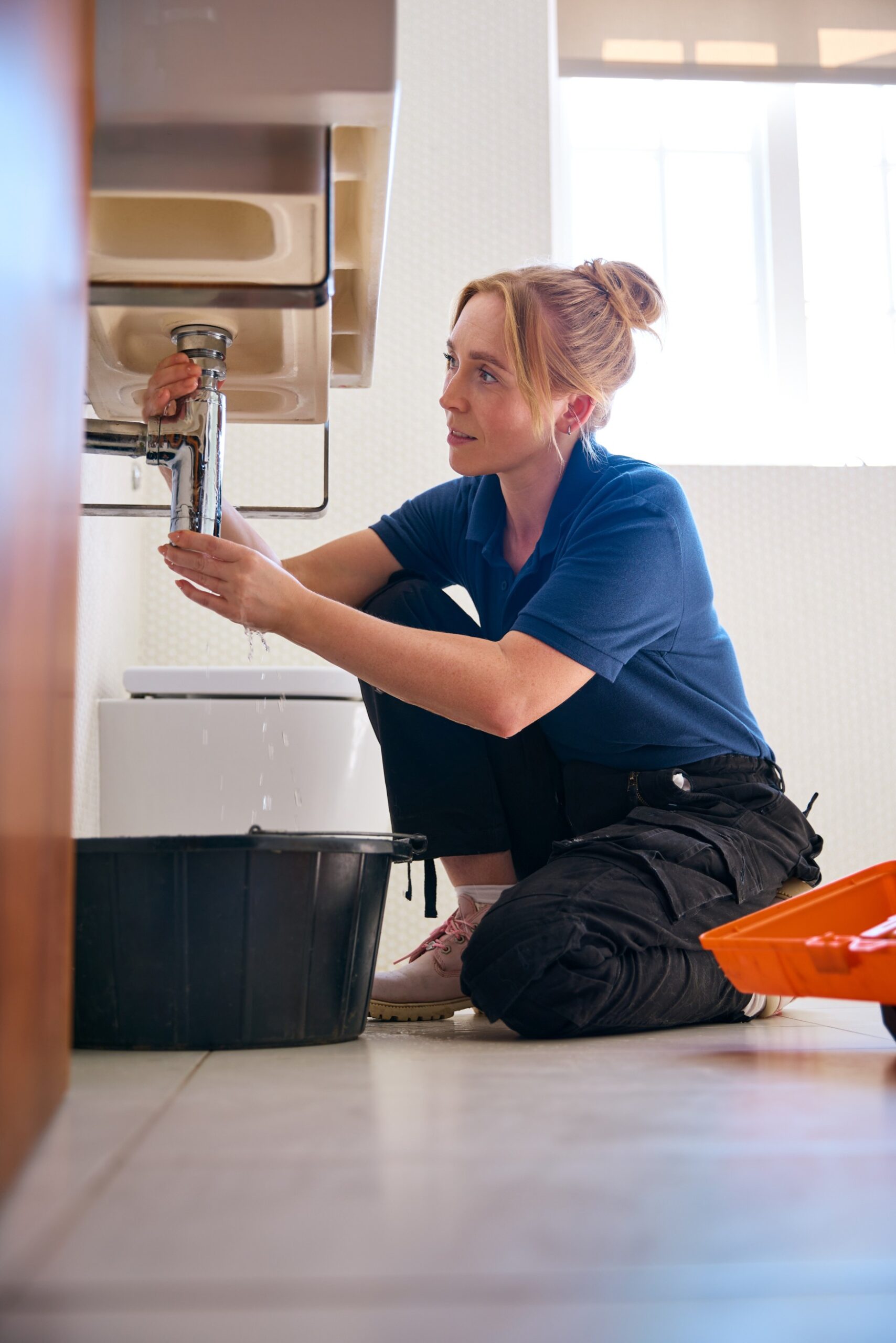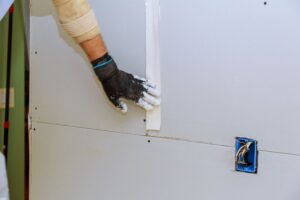You’ve had a leak. A pipe burst. Maybe the toilet upstairs caused a ceiling disaster downstairs. The plumber came in, fixed the issue, and now you’re left staring at a gaping hole in your wall. So… can a plumber repair drywall, or are you stuck making a second call? If you’re in San Diego, you’re not alone in wondering who picks up the pieces after plumbing chaos. At SGP Drywall, we’ve seen this exact scenario play out hundreds of times—and we’re here to help you make sense of your next steps.
First Things First: Plumbing Comes Before Patchwork
Here’s the deal: plumbers are fantastic at fixing leaks, unclogging drains, and stopping water in its tracks. But when it comes time to repair drywall, most plumbers will look at you with the same confused face you probably gave the bill.
That’s because drywall patching isn’t part of standard plumbing services. Their job is to access the pipes, even if that means cutting into walls or ceilings. However, patching that drywall? That’s usually up to someone else.
Why Plumbers Cut Into Drywall in the First Place
You might be wondering, “Why can’t they work around the wall?” Unfortunately, that’s rarely an option. Whether you’re fixing a leak or replacing pipes, drywall after plumbing work often ends up in rough shape.
Plumbers may need to:
- Cut square access panels in walls or ceilings
- Remove entire sections of sheetrock
- Create small holes for scope cameras or leak tracing
These access points help them do their job. But once the leak is gone, you’re staring at literal wall damage that needs repairs.
What Happens After Plumbing Repairs?

If your plumber is one of the rare unicorns who offers patching services, you might be in luck. However, most will hand you a recommendation—or leave you to your own devices. That’s where a dedicated drywall contractor comes in.
After plumbing, the most common repairs needed are:
- Patching drywall holes
- Drywall joint repair
- Ceiling drywall fix if the leak came from above
- Wall hole repair for hidden pipe access
- Interior wall patching to blend the fix seamlessly
The Problem With DIY Repairs After Plumbing
We get it. You already paid for plumbing. You’re not thrilled about spending even more. So maybe you grab some spackle and try to wing it.
But here’s the thing: patching drywall holes might look easy on YouTube, but doing it right requires more than slapping mud on a wall. You’ll need to:
- Cut clean edges around the hole
- Fit in new gypsum board
- Tape seams and apply joint compound
- Sand to a smooth finish
- Texture match the surface
- Repaint
If you miss a step, the repair will stand out like a bad haircut.
Why Hiring a Drywall Pro is Worth It

Calling a drywall pro isn’t just about saving you time (though it does). It’s about:
- Getting a seamless finish that blends in with the existing wall or ceiling
- Preventing visible bulges, seams, or mismatched paint
- Avoiding potential mold issues if wet drywall wasn’t thoroughly dried or removed
- Saving money on future repairs caused by amateur fixes
Plus, a contractor experienced with drywall repair after leaks know how to identify hidden moisture, patch with precision, and leave your home looking spotless.
Do Any Plumbers Actually Patch Drywall?
It’s rare, but a few handyman-style plumbers might offer patching as an add-on. These are typically:
- Smaller operations or local plumbers
- Companies that also offer renovation or home maintenance services
- Professionals with a background in construction or remodeling
Still, even if they do patch, the finish may not be as clean as what a dedicated drywall repair service would provide.
Still, Staring at a Hole in the Wall? Let’s Fix That.
SGP Drywall serves homeowners all across San Diego who need post-plumbing patch-ups that don’t look like patch-ups. We specialize in seamless repairs, fast turnarounds, and wall finishes that disappear into the background.
Don’t settle for lumpy texture or sagging tape. Get your walls back to wow.
Contact us today for expert help.
FAQ
How long should you wait after a plumbing leak to repair drywall?
You should wait until all moisture is completely gone before patching. Depending on the severity, this can take 24 to 72 hours with proper ventilation or the use of fans and dehumidifiers. Repairing too early traps moisture and can lead to mold or sagging drywall. If you’re unsure, consult a drywall professional—they can test for residual moisture before proceeding.
Do drywall repairs after plumbing require a permit in San Diego?
Typically, minor cosmetic drywall repairs don’t require a permit. However, if the drywall removal exposed electrical wiring, plumbing components, or compromised fire-rated assemblies (such as garage walls or ceilings), a permit may be necessary. It’s always a good idea to double-check with San Diego’s building department or your drywall contractor.
Is it better to replace or patch drywall after a significant plumbing issue?
If the damage is minimal—say, a small hole or single panel—patching is usually fine. But if the area is large, involves soggy drywall, or there’s evidence of mold, it’s safer and more effective to replace the damaged section entirely. A pro will be able to assess the best option based on wall condition and extent of water exposure.
Looking for More Answers?
Check out our article: Can Painters Do Drywall Repair?




